What is business messaging? Benefits, challenges, and examples

Business messaging for value-driven customers
Paying close attention to your customer’s preferred communication channels is critical to optimizing customer retention, conversion, and satisfaction. It’s no longer enough to send them generic emails or have your support team call them back—your business messaging needs to keep pace with today’s technology.
73% of customers now anticipate a personalized experience from the companies they spend money with, and 90% rate an immediate response as essential when they have a support question. This means businesses that lag behind, regarding tech like AI chatbots, or have poor business communications, are at a huge disadvantage in the market.
In this blog, we’ll answer the question, “What is business messaging?” before looking at the following:
The core advantages of integrating business messaging into your operations
Practical strategies and best practices to maximize the impact of your business messaging efforts
An overview of the leading platforms tailored for business messaging
What is business messaging?
Business messaging refers to the communication methods organizations use to interact with customers, employees, and stakeholders, including SMS, an in-app message center, push notifications, and WhatsApp.
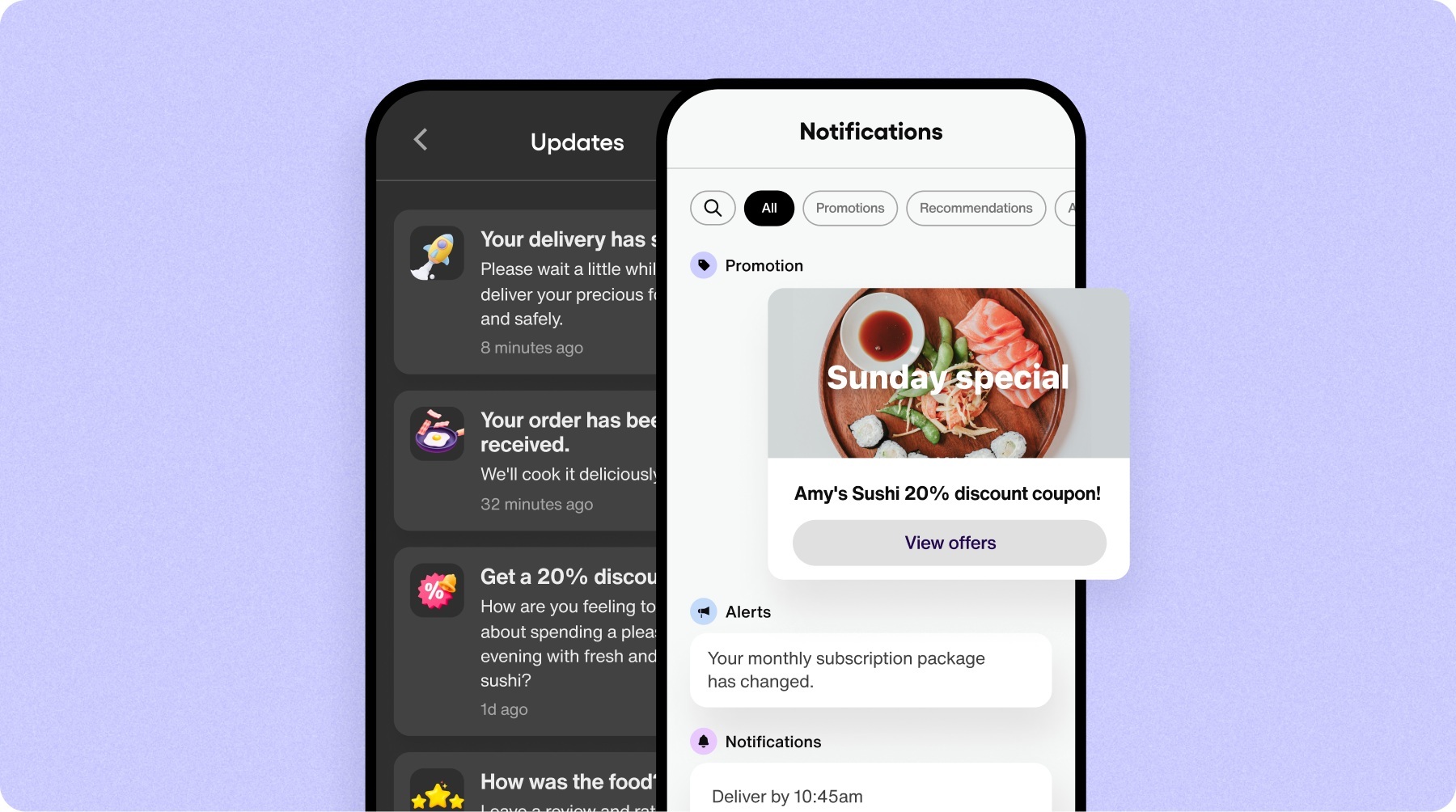
Business messages can range from promotional offers to delivery notifications to product alerts. Customer messages can be product questions, complaints, or support requests. Business messaging can be one-way or two-way, live or asynchronous, persistent or ephemeral. Each channel has its pros and cons and thus relevance depending on the use case.
Unlike business emails, which may be deleted or treated as spam in a crowded inbox, business messaging channels like SMS, an in-app message center, push notifications, and WhatsApp allow companies to interact in real-time with customers.
These channels offer a secure, direct way to offer support, send updates and reminders, promote products and services, and engage in personalized communications at scale.
With generative AI and automations, business messaging capabilities are progressing rapidly, meaning that companies have a huge potential to develop more dynamic and efficient customer communications.
For example, AI chatbots allow a businesses to provide support, recommend products, and engage customers in conversation— whenever they want. To learn more, you can read our introduction to what is an AI chatbot?
Top 5 benefits of business messaging for companies
When deciding which business messaging channel is best for your organization, remember that you’re not just buying a communication tool; you’re acquiring a strategic asset that can drive significant improvements across your business and help your business achieve goals faster.
1. Faster, more efficient customer support
Business messaging provides a convenient way for users to get initial support and service from your company. Instead of waiting on hold on the phone or checking their inbox and spam folder for an email response, customers can receive instant assistance through channels such as SMS or even in-app chat support.
Customized, integrated chat support and AI chatbots can streamline your support processes and give people 24/7 answers to their most common questions without them needing to scour your help pages for answers.
For example, Virgin Mobile UAE saw a 26% decrease in customer support requests and achieved a 96% CSAT score when they switched to in-app chat support messaging. You can read their success story here.

"With Sendbird we provide a 100% digital customer support experience for our customers with native in-app chat based interactions. Our customers are more engaged and consistently give us a CSAT score of 5/5. My advice to anyone who is digitizing their customer service would be to consider Sendbird as a strategic partner."
Özgür Gemici, Senior Product Manager
2. Increased customer engagement
Business messaging tools like push notifications allow companies to engage with their customers in a more immediate and personal manner. Unlike emails that often go unread, these notifications have a high open and read rate, ensuring that any message you send is much more likely to be viewed and acted on.
SMS and MMS text messaging also get high engagement, such as 98% open rates. Though you might consider the benefits and differences of SMS vs MMS texting.
Whatever your choice of messaging tool, immediacy can significantly improve your user engagement metrics and make it easier to share important updates, promotions, and special offers that customers will love.
Porter, one of India’s leading logistics companies that has serviced over 10 million customers across 19+ cities in India, achieved a 96% message delivery rate and 78% message open rate with Sendbird’s Business Messaging solution.

"Sendbird has proven to be very helpful in significantly increasing engagement for notifications. We have been able to achieve higher conversions along with greater savings on our SMS communications. The successful integration of notification solutions into the system has seen a surge in our brand-to-user communications."
Apurva Shetty, Product Manager
3. Reduced costs
Companies globally lose $20.5 billion dollars a year due to email spam, and 90% of emails are treated as spam by email service providers. Not to mention that sending emails is an expensive process in itself. If you’re relying on emails for your support, marketing, and customer service, those costs quickly add up.
Automated communications, such as appointment reminders, order updates, and frequently asked questions, can save your agents’ time. Channels such as in-app notifications can significantly reduce operational costs.

Messaging platforms can also handle multiple conversations at once, which frees up your live teams’ time to focus on more complex, high-value service and support interactions.
4. Personalization and analytics
Business messaging platforms typically come with built-in analytics and metrics, enabling companies to gather personalized data about their users’ preferences, interactions, and behavior.
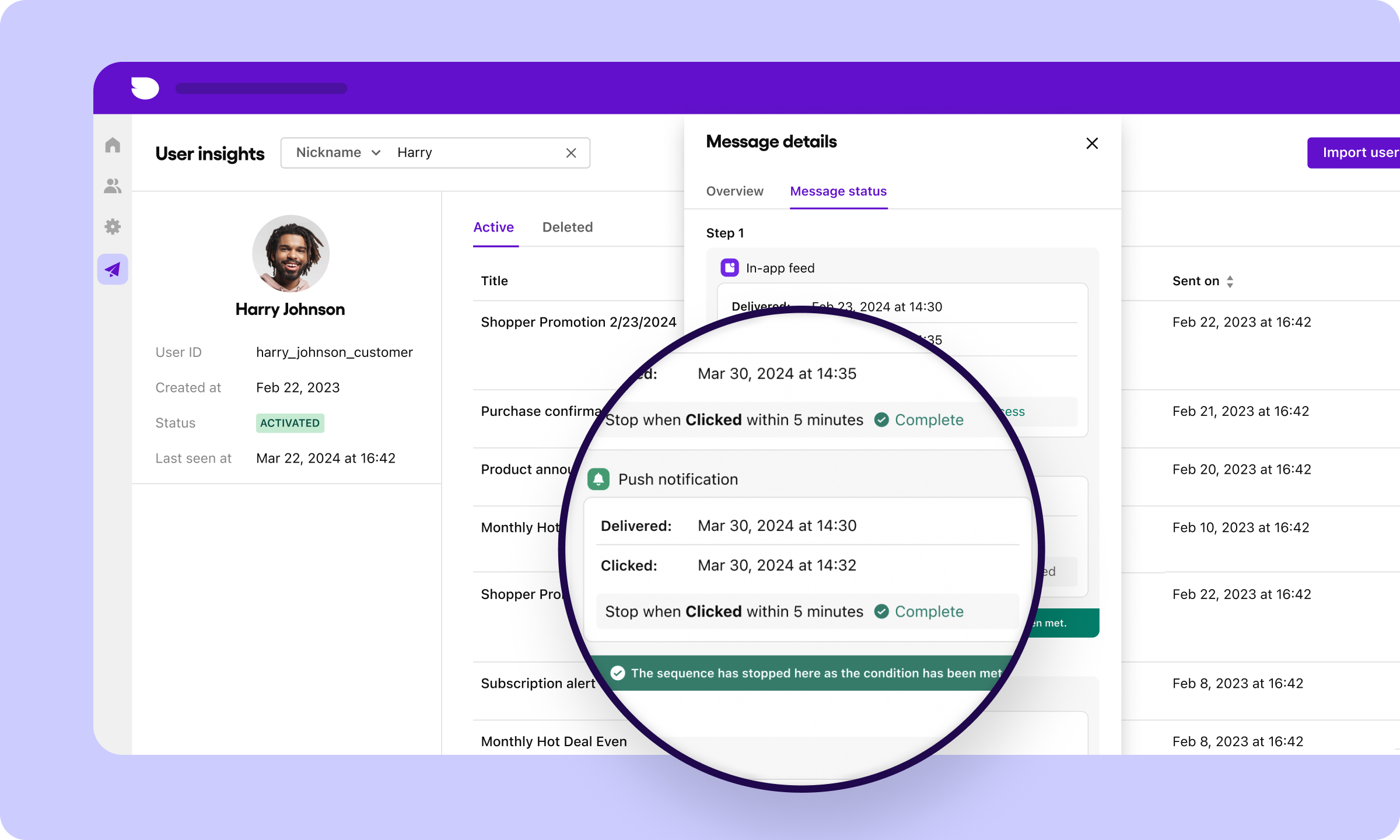
This data can be used to tailor personalized marketing and sales communications, ensuring that every message is relevant to an individual's interests and needs. These personal communications can increase customer satisfaction and loyalty and ultimately improve your bottom line.
5. Faster time to market
Setup and implementation of any new technology can be messy, but with many business messaging apps and platforms, companies can roll out their new communication channels at speed and scale, shaving months off their product roadmap and implementing in weeks—not months.
Examples of business messaging
Business messaging can be used for any type of user, customer, and prospect interactions, whether they’re transactional, promotional, or operational.
Customer loyalty programs
Messages related to customer loyalty programs can keep your customers informed about rewards, points, and perks. These messages aim to encourage retention and repeat purchases by increasing engagement and rewarding customers for choosing to shop with your brand instead of with your competition.
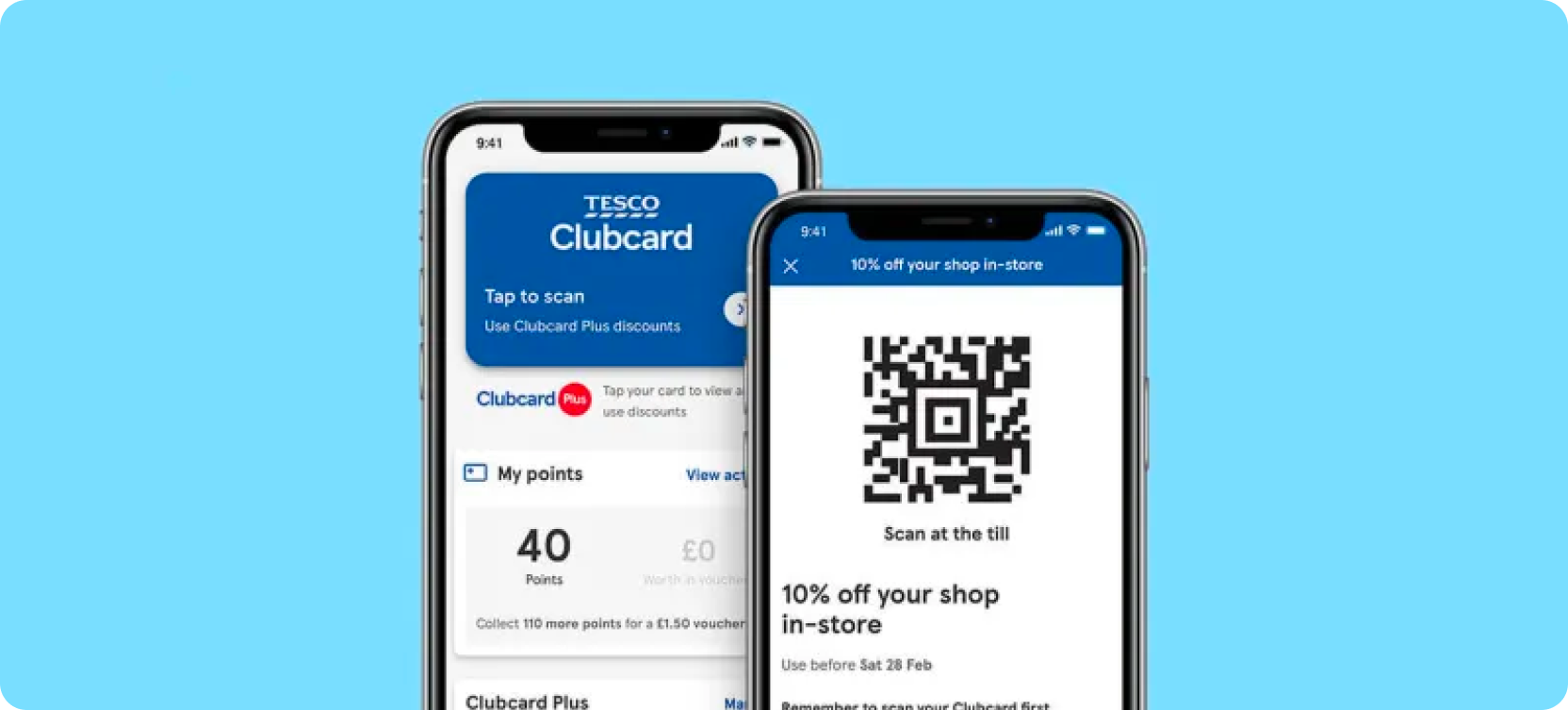
Transactional messages
These automated business messages involve commercial transactions between a user and a business. They include purchase confirmations, appointment reminders, booking confirmations, shipping updates, and payment receipts.
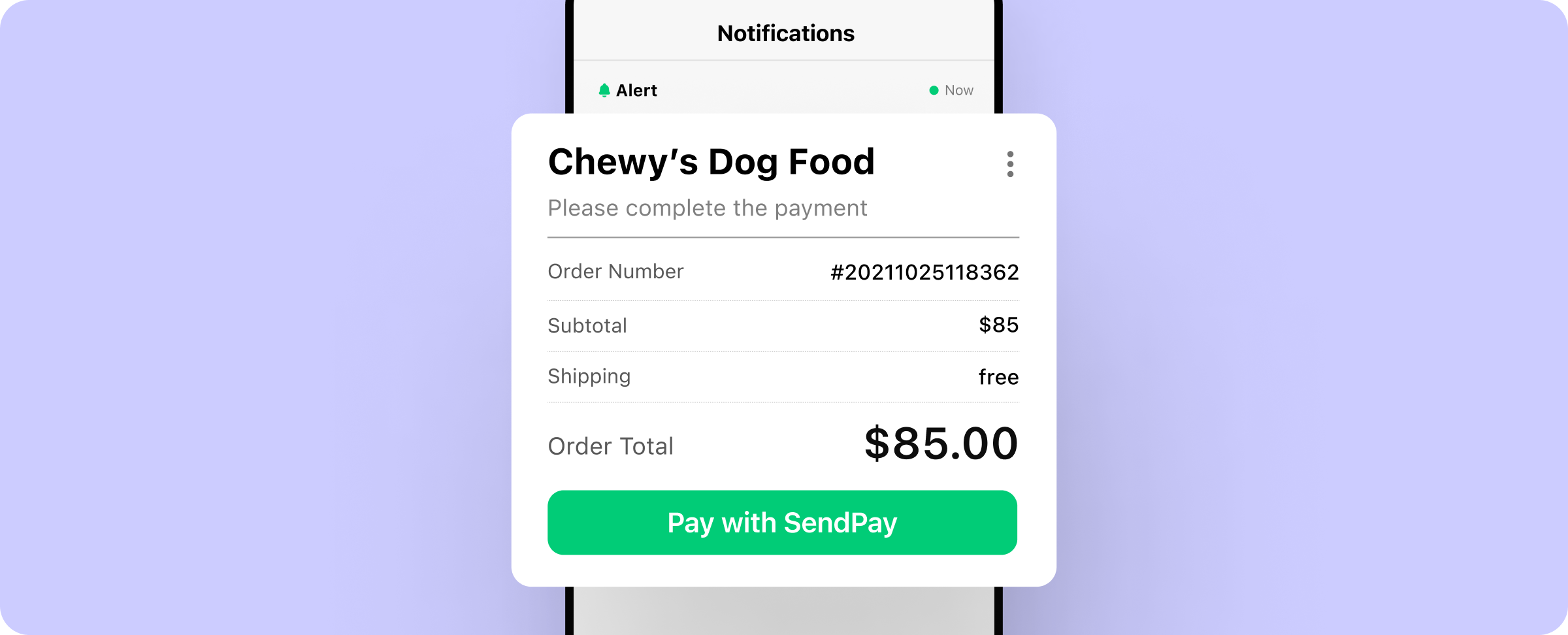
For example, when you order from Amazon, you will receive a sequence of transactional messages that confirm your order, send you the tracking code, and confirm the item has been delivered.
Promotional messages
Businesses use promotional messages to help them market products, advertise events, and send special deals to customers.

For example, a retailer might use WhatsApp Business to send out personalized product recommendations to existing customers.
Operational messages
These messages are designed to improve and automate the operational side of business processes. They cover the technical side of business messaging, informing customers about things like upcoming pricing changes, terms and conditions, or system updates.
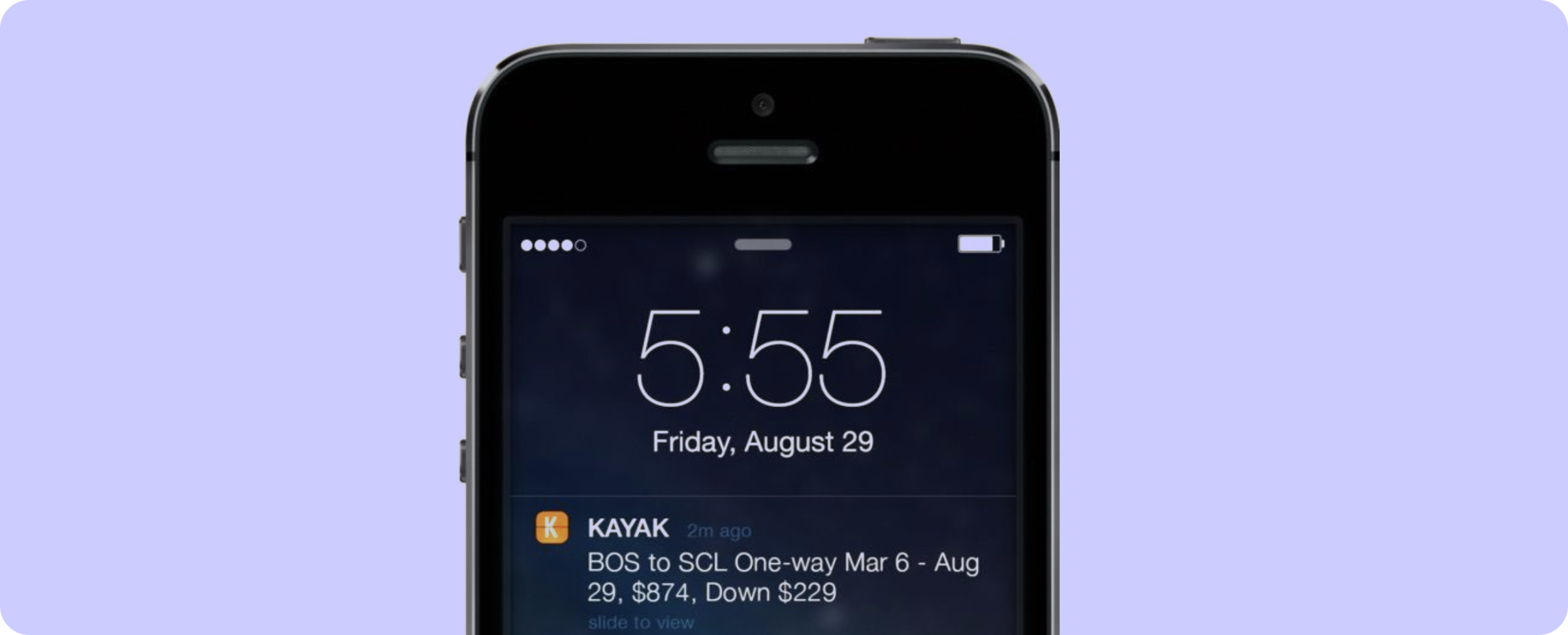
If you’ve ever booked a hotel and received a message about their check-in procedures, this is one type of operational message.
Business messaging challenges
Despite the benefits of business messaging, every messaging method comes with its own unique set of challenges that need to be addressed.
Operations and orchestration between multiple groups
Finding a platform that serves both your operational and marketing needs can be complex. Companies that don’t have the time or resources to build in-house need a software solution that streamlines marketing communications, has a simple interface for operators, and offers a single, flexible API for developers. Achieving all of these things in a unified, centralized place is critical for success.

How to build the perfect mix of mobile customer communication channels
Scalability issues
As your company and user base grow, so will your messaging volume. If you don’t have a platform that makes scaling simple, it can be increasingly difficult to provide timely and personalized communications to the people who matter most to your business.
While automation and chatbots offer solid solutions, messaging needs to be created and managed carefully to be effective and maintain a human touch.
Privacy and security
Data privacy and security are among the most challenging aspects of business messaging. There are an increasing number of strict, global regulations (like GDPR and HIPAA) that need to be followed, along with local data protection laws.
Any messaging solution you use needs to have advanced encryption and security protocols to protect your customer data against breaches, and you’ll need to be transparent about data use and storage.
Maintaining cross-channel consistency
If you’re using multiple messaging channels, ensuring a consistent brand voice can be challenging. This is especially problematic if you have an enterprise company with different teams creating and sending messages. Inconsistencies can dilute and even damage your brand, as well as confuse your customers.
Integration with existing systems
Integrating business messaging solutions seamlessly with an API and your existing tech stack is essential to avoid downtime, extra costs, and negative effects on your customer experience. As with most complex software integrations, this process can be complex, time-consuming, and resource-intensive.
Meeting customer expectations
Today’s consumers demand instant responses to questions and fast solutions to problems. Balancing their need for speed while still offering high-quality responses can be challenging, especially if you have a high volume of customer interactions.
Despite all of the above, the ongoing benefits of business messaging outweigh the challenges. To overcome the challenges above, you need to build a robust strategy and select the right software partner. This will help you implement powerful business messaging technology that will improve your communications, customer satisfaction, and overall efficiency.
Let’s now take a look at how to build a strong business messaging strategy.
4 steps to building a robust business messaging strategy
Rolling out your business messaging successfully requires strategic thinking about your approach and your choice of messaging channels.
1. Audience research
Start by deeply understanding your users and customers. Take time to interview and survey users, define their demographics, and examine their intents, behaviors, and preferences regarding business messaging.
Knowing your audience will help you tailor engaging marketing and sales messages that get opened and acted on.
2. Define messaging goals
Any new business initiative needs to start with addressing your existing messaging problems together with your end goals.
Do you want to increase sales? Improve engagement? Drive brand awareness? Will you need one-way messaging? Two-way messaging? AI chatbot support?
Working backward from your goal will help you decide on the right channels to use, a sequence of channels that can help you optimize for delivery and open rates, and a software provider that can work with you to drive results.
3. Plan your messaging schedule
Once you’ve defined your goals, it’s time to plan out your content release schedule. You’ll need to factor in orchestration priorities and governance between groups so your messaging strategy is unified, cohesive, and has buy-in from everyone involved. When building your strategy, consider whether your audience and brand would benefit most from an omnichannel vs. multichannel messaging strategy.
4. Track, measure, and optimize
Your business messaging strategy isn’t a once-and-done situation. You’ll need to continuously track and measure your channels, customer feedback, and the performance of your campaigns. You can use the insights you gain from this analysis to refine your business messaging strategy further.
This involves tracking the KPIs that are most relevant to your goals — these might be open rates, conversion rates, or customer engagement levels. Use these insights to double down on what’s working and adjust or rethink the parts that aren’t performing so well.
A robust business messaging provider should have built-in analytics that let you easily measure and optimize for the metrics that are most important to your organization.
Top 5 business messaging tools
There are major apps and platforms on the market now helping organizations meet their communication needs. Here’s an overview of some of the leading messaging platforms.
1. Sendbird
Sendbird is the leading communications API platform that enables seamless integration of messaging functionalities into apps and websites.
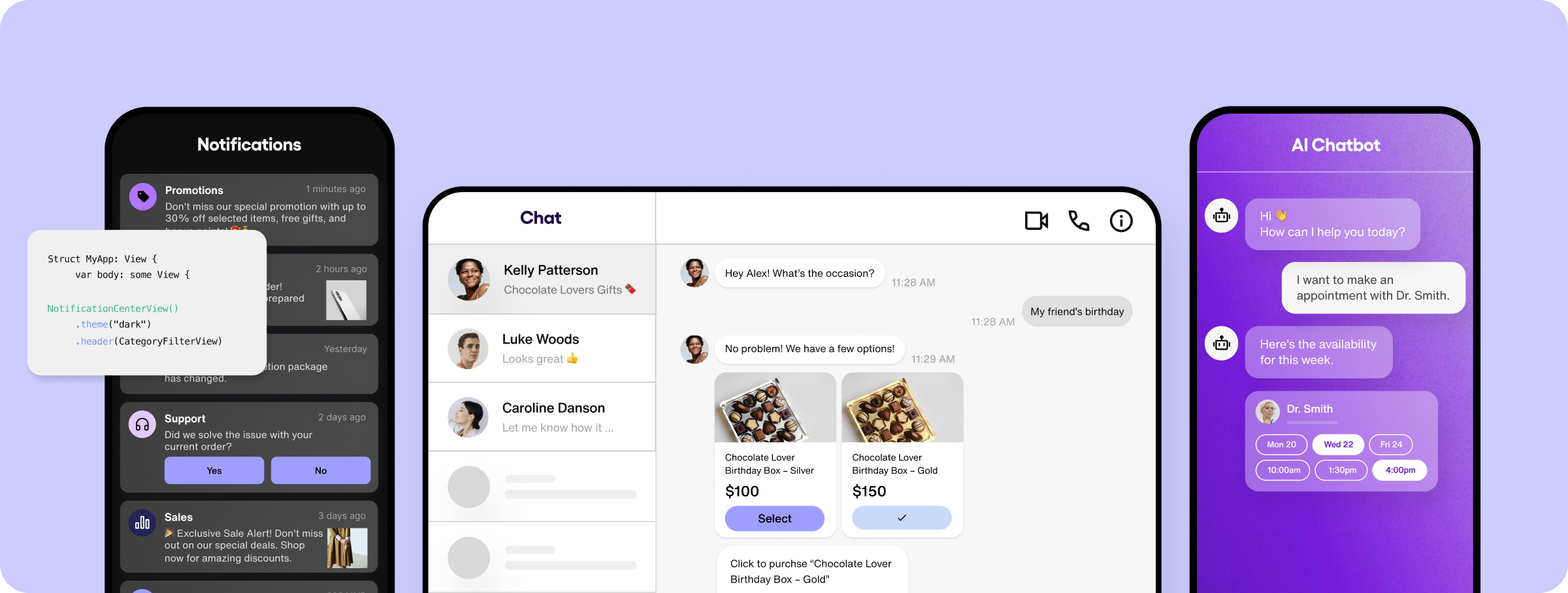
With products like a customizable AI chatbot, in-app message center, and a full suite of Business Messaging solutions, Sendbird works across all industries and verticals, improving customer support, conversion rates, community engagement, and social interactions. Its scalable, secure infrastructure provides cross-platform support for iOS, Android, and web applications.
2. Google Business Messages
Google Business Messages is a mobile communication tool that allows businesses to engage directly with customers through Google Search and Maps. Consumers can ask questions, make purchases, schedule appointments, and get recommendations through a chat interface directly linked to a business's Google profile.
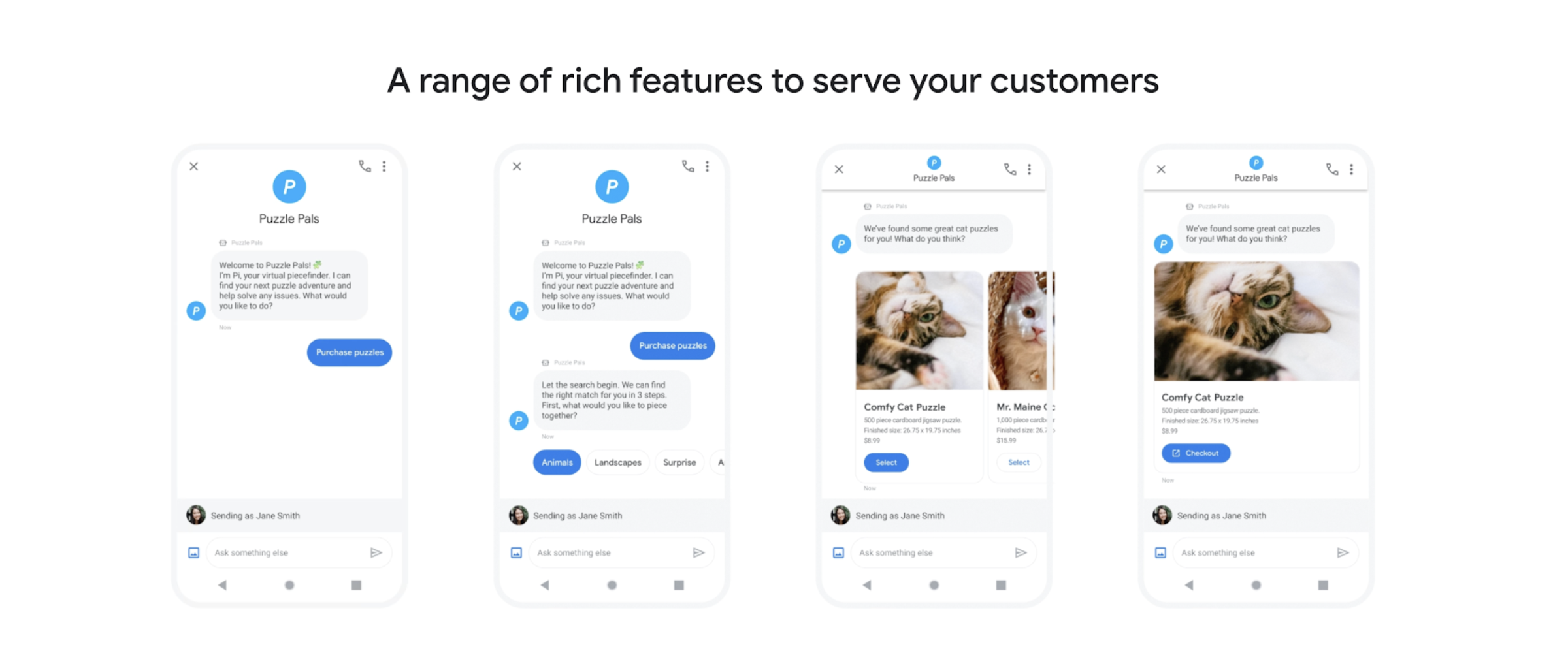
The downside is that the reliance on Google's ecosystem restricts customer interactions with people actively using Google Search and Maps. This means it can’t cover all customer engagement needs, especially if customers are more active on other platforms or social media channels.
3. Apple Messages for Business
This channel allows businesses to connect with their customers directly through the Messages app on Apple’s iOS devices in a familiar and secure environment. Users can find businesses via Safari, Maps, Search, and Siri and start conversations, make product purchases, and book appointments using Apple Pay and other integrated iOS features.
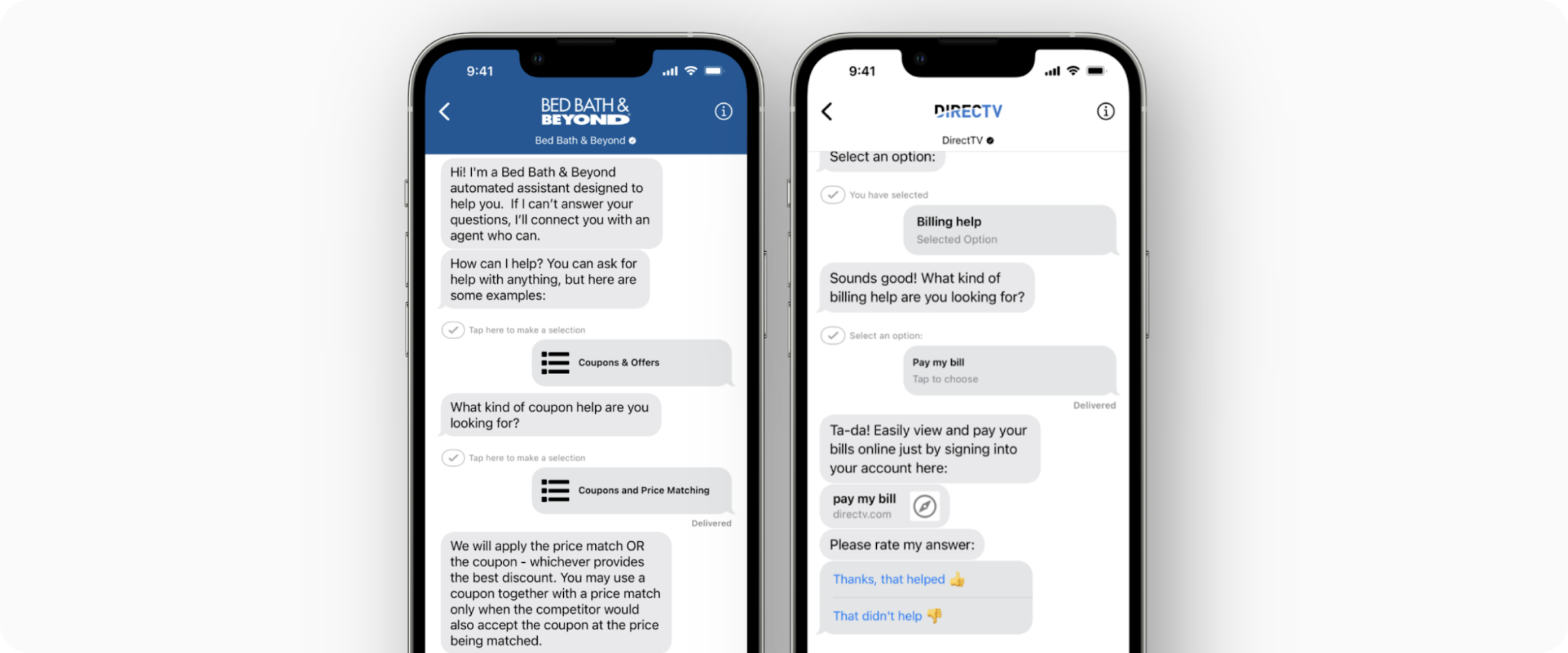
Like Google Business Messaging, Apple’s messaging channel reach is limited. Only users of Apple devices can access the service, so it excludes a potentially significant number of people who prefer Android or other operating systems. Apple also has strict messaging guidelines and standards, which can pose integration challenges for some businesses.
4. WhatsApp Business
WhatsApp, a popular messaging tool, also offers a business app that helps small to medium-sized businesses engage more effectively with customers using the WhatsApp platform.
It’s free to download the app and use basic but handy functions such as automated messages and customer labeling, as well as to build a business profile. Businesses can create catalogs to showcase their products directly inside the chat interface.
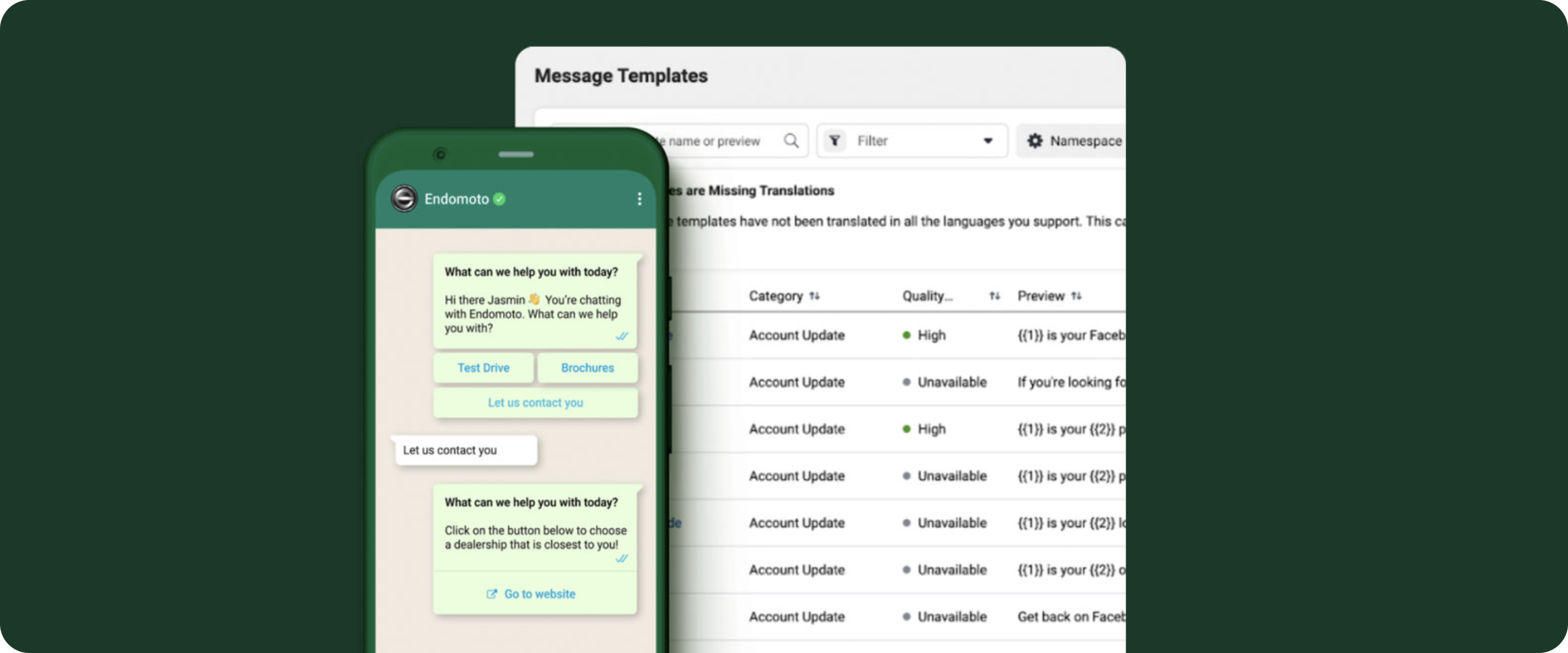
WhatsApp Business supports end-to-end encryption and offers businesses some messaging statistics to help them optimize their customer engagement strategy. You can integrate your business with the app using the WhatsApp Business API.
5. Threema
If data privacy and security are priorities, Threema is a great choice for business messaging. With a core focus on security, it offers end-to-end encryption for all forms of communication within the app, including SMS, voice calls, group chats, and file transfers, ensuring that only the intended recipients can read messages.
Threema offers minimal data retention for users, only storing data that is absolutely necessary for the app to function. The data is kept on servers in Switzerland, which has stringent privacy laws. It avoids advertising and doesn’t sell its user data.
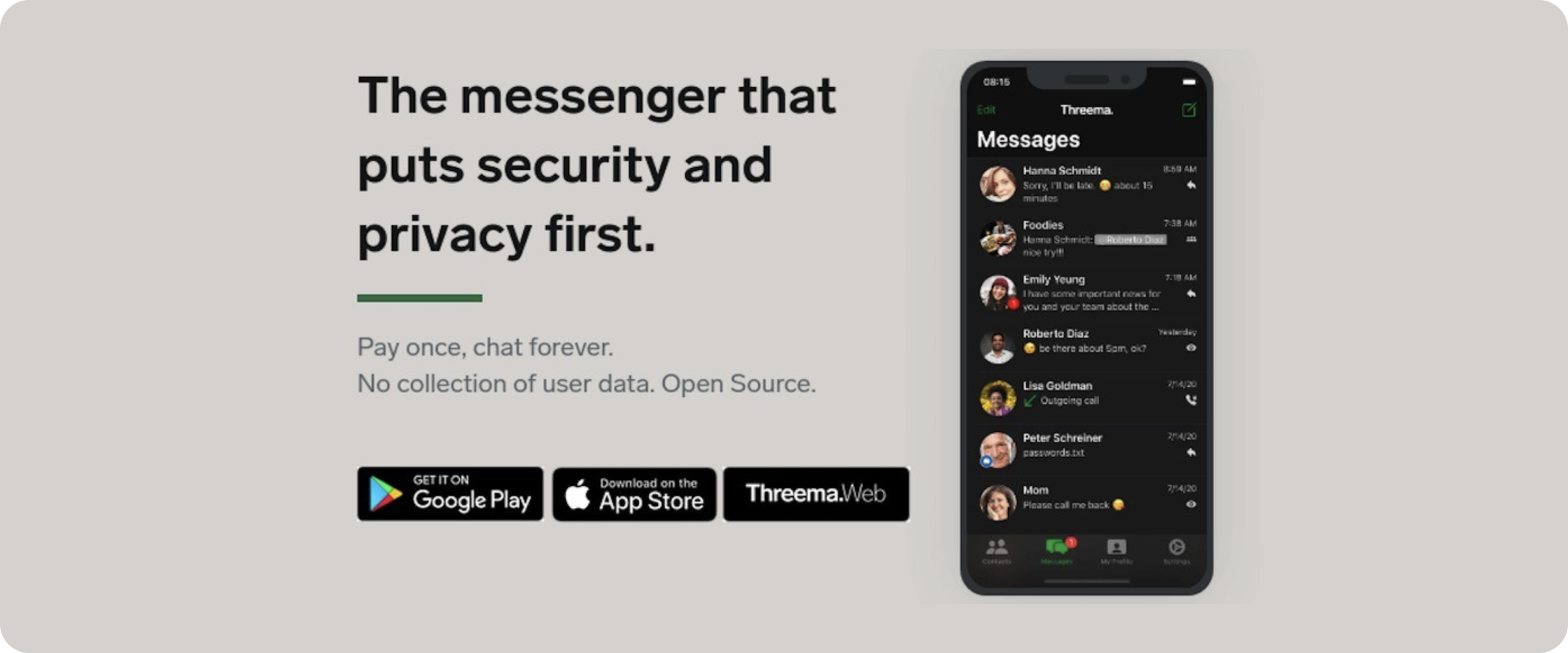
In addition to the app, you can download the web client for desktop use. You can also securely connect with contacts by scanning personal QR codes.
Threema is ideal for organizations concerned with privacy and want to ensure their communications are secure and not monitored or stored by a third party. However, it’s not as well known or used as Google, Apple, or WhatsApp business messaging, which can make it difficult to get platform buy-in and adoption.
Superior business messaging: Start sending business messages with Sendbird Business Messaging
Optimizing communications in today’s attention-driven economy can be challenging and expensive. That’s why we developed Business Messaging.
Sendbird Business Messaging offers a sophisticated, omnichannel messaging solution that includes push notifications, WhatsApp, and in-app notifications. It prioritizes low-cost, high-performing channels, and activates alternative channels only when they’re needed.
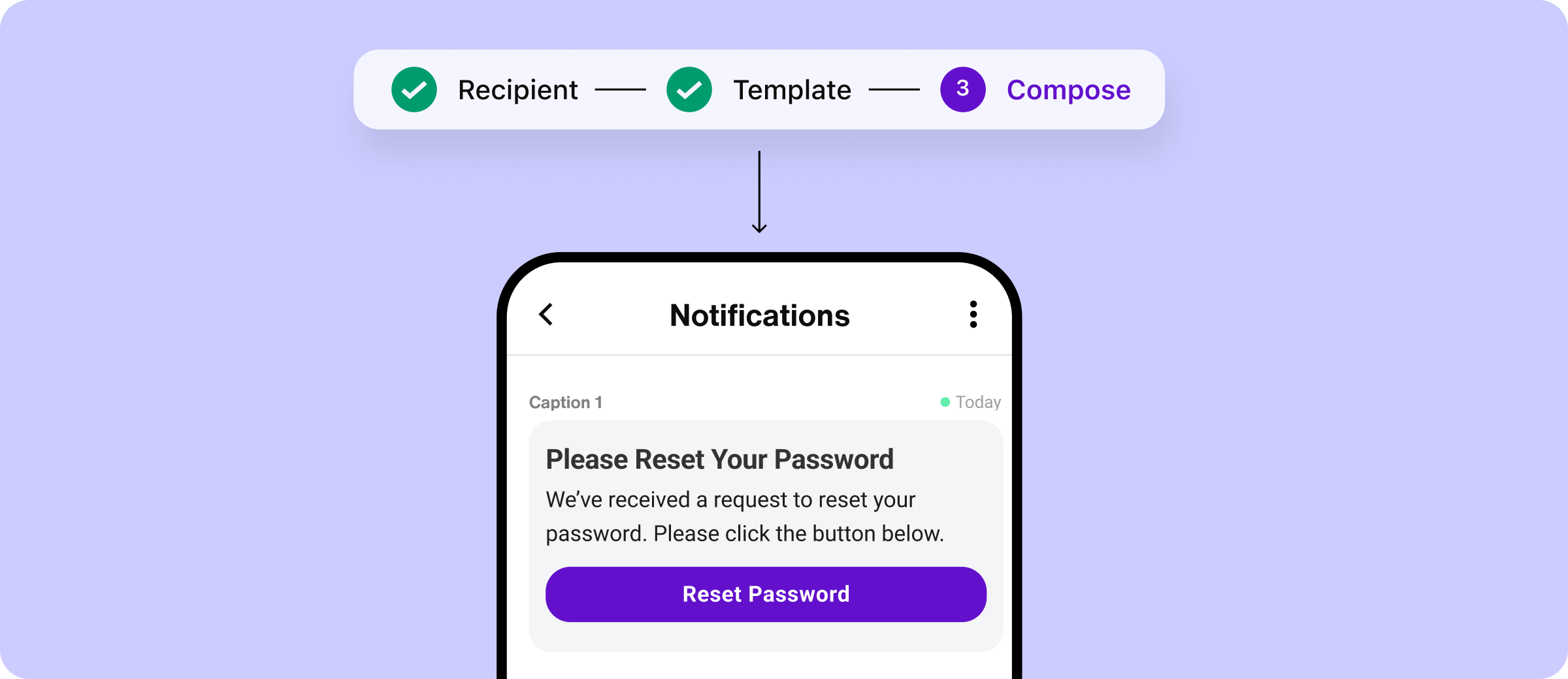
With Sendbird’s Business Messaging solution, you’ll get an intuitive, unified dashboard for message drafting and templating, omnichannel campaign building and templating, as well as multi-layer analytics for campaigns, channels, and users.
Ready to be the next success story? Get started for free with Sendbird today.








